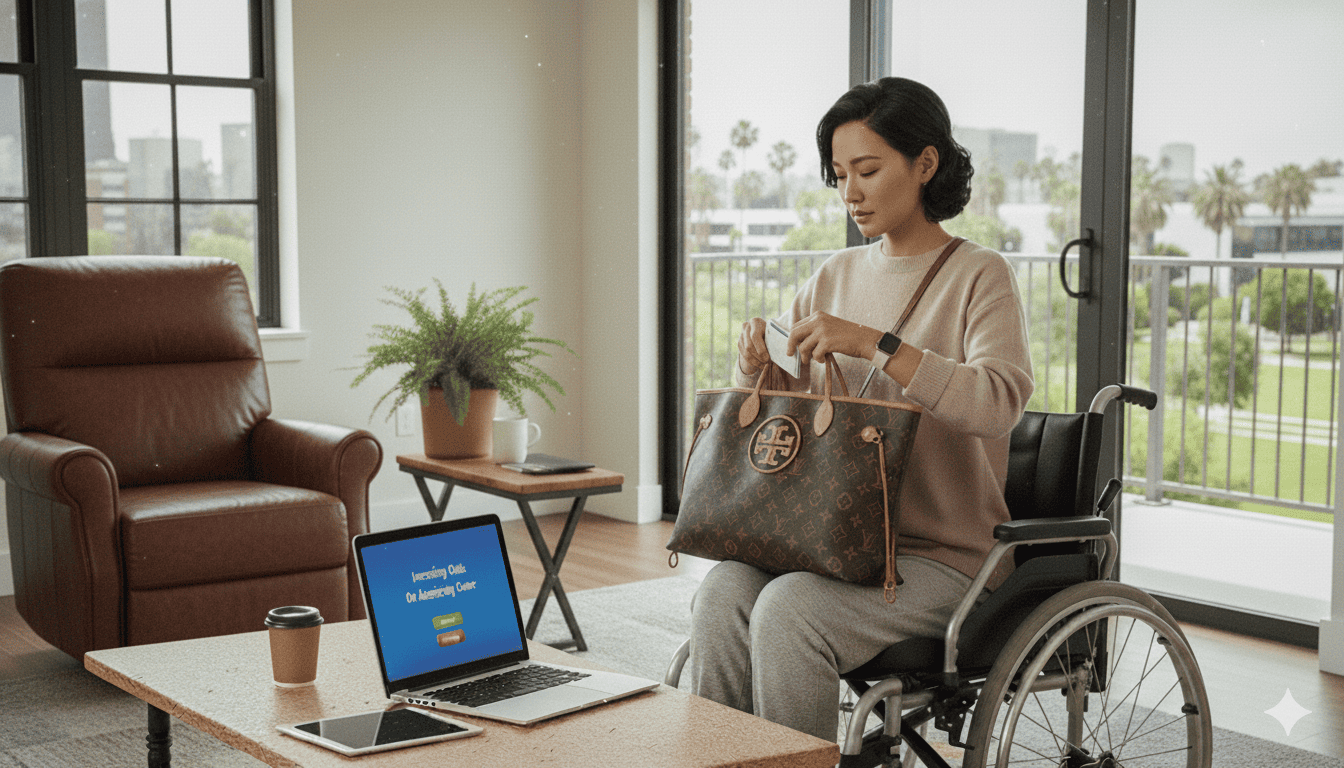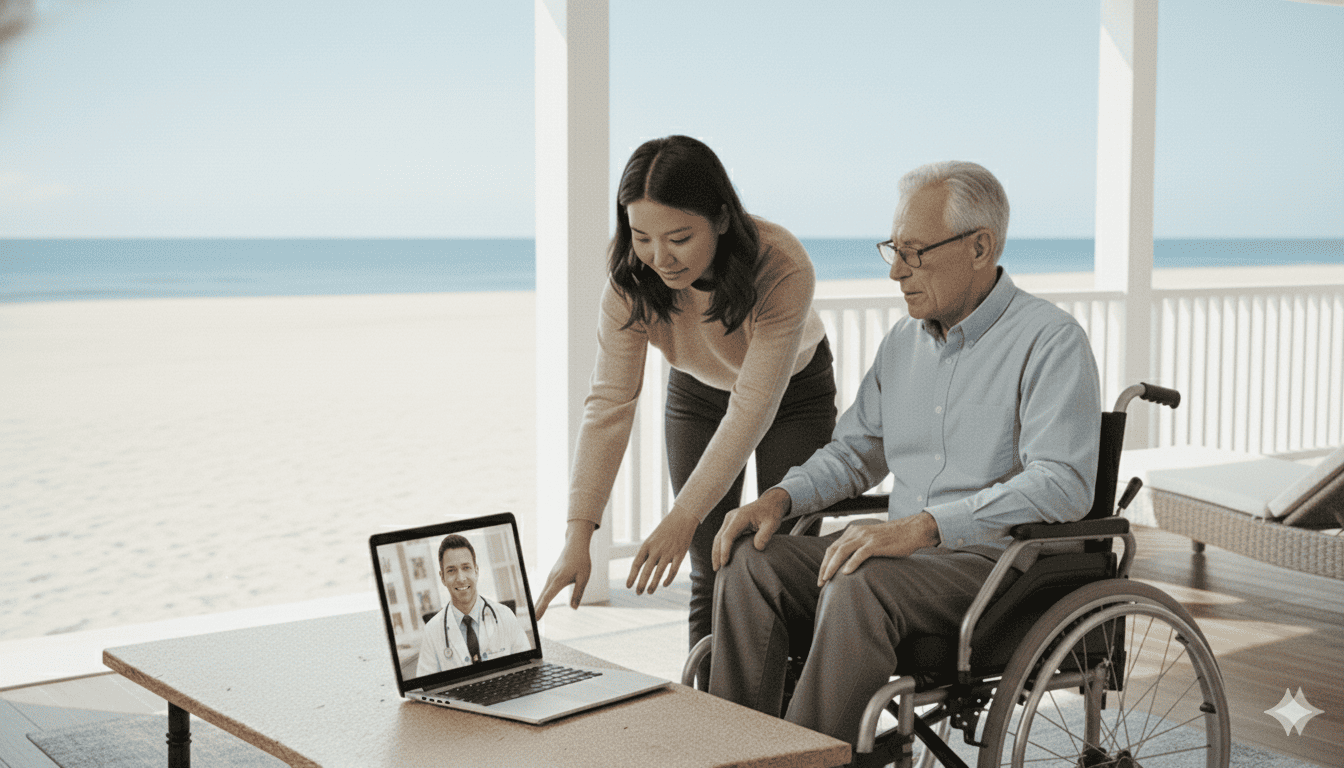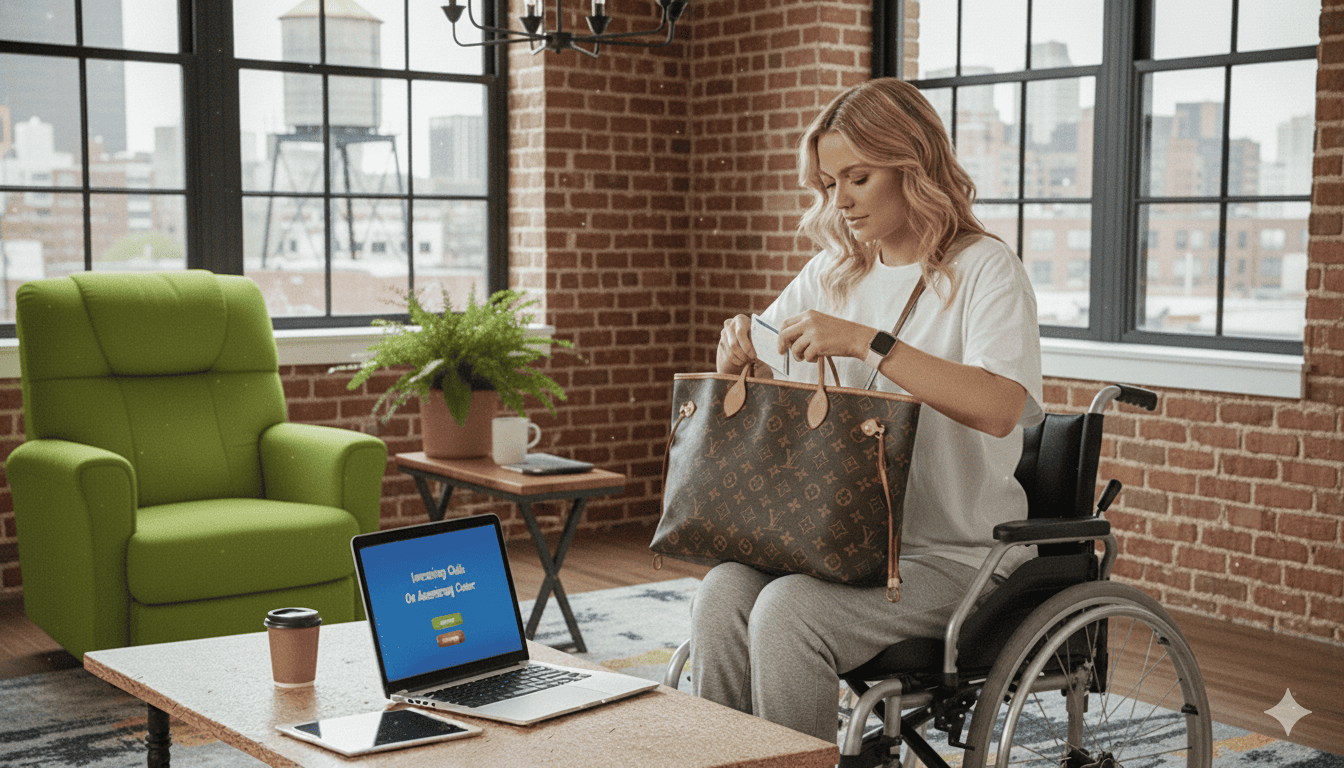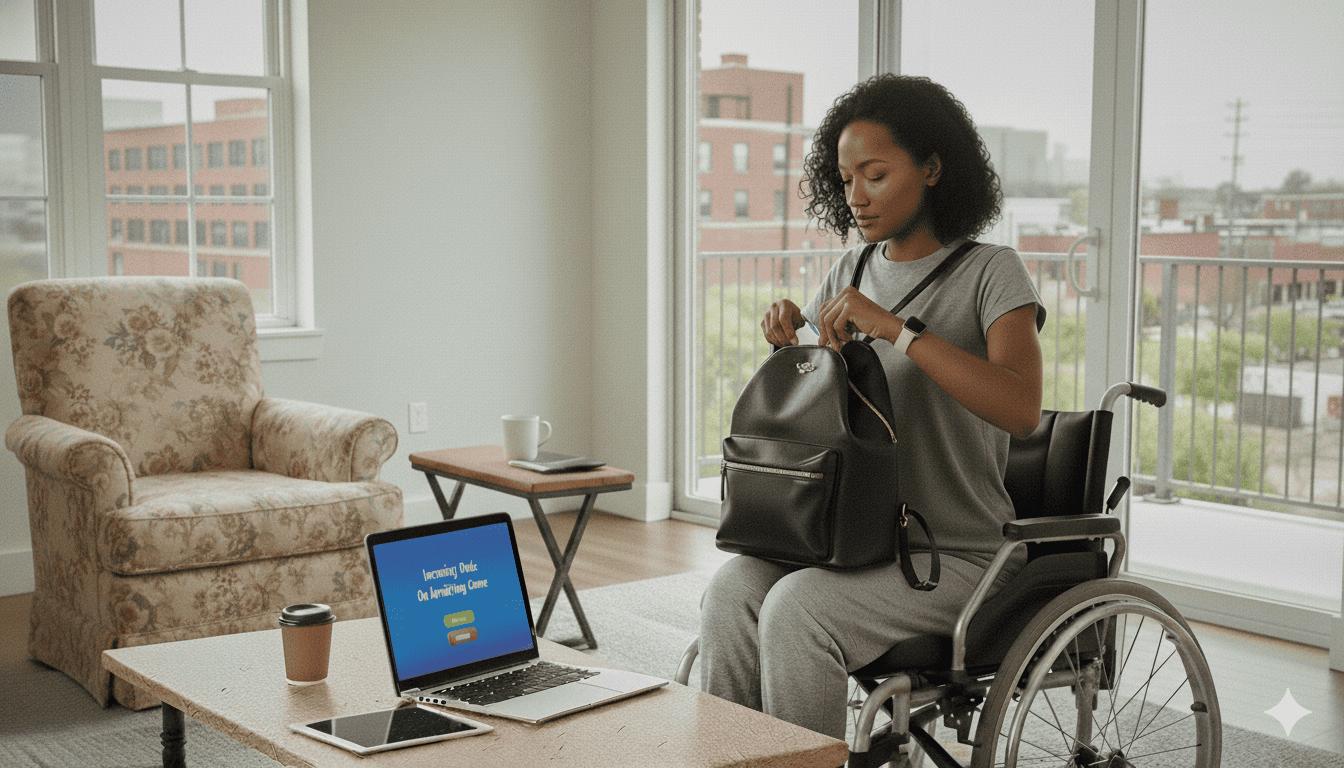How to Prepare for a Telehealth Visit in Athenahealth
💡 Knowing how to prepare for a telehealth visit in Athenahealth is key to good virtual care. Both patients and clinics play a role in preventing...
7 min read
Gregory Vic Dela Cruz : Oct 22, 2025 11:00:00 AM

Confirm patient devices, connectivity, and browser settings before the appointment.
Send clear step-by-step instructions for how to join the virtual visit.
Verify consent forms and insurance information ahead of time.
Use reminders to ensure patients log in on time.
Check provider audio, lighting, and video environment for professionalism.
With integration, you can automate these steps to make teleconsultations safe and simple.
Virtual care has become a cornerstone of modern medicine. It offers patients easy access to healthcare without travel or waiting rooms. Yet successful telehealth depends on preparation. Without it, clinics risk connection failures, frustrated patients, and lost productivity.
In AdvancedMD, preparation goes beyond clicking a video link. Providers need to ensure every part of the workflow, from schedules to checkout, is ready. Those who verify technical setup, send instructions, and guide patients are better off. In fact, they see dramatically fewer disruptions.
This article explains how to prepare for a telehealth visit in AdvancedMD. We'll discuss both patient and clinic readiness. You’ll find actionable telehealth preparation checklists, best practices, and real-world examples.
Interested in having smoother workflows and stronger patient engagement in your virtual consultations? Keep reading.
In our ultimate guide, we did a deep dive into what you should look for among the best HIPAA-compliant telehealth platforms. But without the correct preparation, advanced features stand no chance and you'll end up making marginal improvements. Here's why doing prep work for patients and staff is so important.
Patients expect virtual care to be simple and dependable. The moment a connection fails or a session lags, confidence erodes. When clinics provide clear instructions and reminders before each appointment, patients feel guided and supported. Telehealth preparation helps prevent missed sessions and ensures a professional impression from start to finish.
For providers, wasted time during setup means fewer completed visits per day. Preparing the system, verifying patient data, and testing connections beforehand minimize downtime and scheduling gaps. This efficiency translates into higher revenue and a better experience for both staff and patients. When every telehealth visit starts on time, the workflow mirrors an in-office visit—predictable and effective.
Telehealth preparation also ensures HIPAA compliance by verifying that all communication happens on secure, approved platforms. Clinics using AdvancedMD benefit from built-in encryption and consent verification tools that keep patient data safe. When forms and permissions are completed beforehand, privacy risks drop significantly, and compliance audits become seamless.
Patients who are well-prepared tend to engage more actively during virtual consultations. They complete intake forms, share symptoms accurately, and follow care instructions afterward. This proactive behavior leads to better clinical outcomes and strengthens the provider-patient relationship. Clinics that prioritize preparation see a measurable rise in satisfaction scores and repeat visits.
No-shows often happen when patients don’t know how to log in or face last-minute technical issues. A clear telehealth preparation checklist AdvancedMD clinics can share solves these problems by setting expectations early. Automated reminders, test-call options, and easy-to-follow links make virtual appointments more reliable.
Patients should test their devices—computer, tablet, or smartphone—before the appointment. They need to ensure they have a stable internet connection, functioning camera and microphone, and a compatible browser. Clinics can simplify this by sending one-click test links and step-by-step setup guides in advance.
Before the appointment, patients should fill out intake or consent forms through their AdvancedMD patient portal or a secure link. Completing forms early ensures providers have all necessary medical histories and insurance information before the call begins. This step avoids delays and makes the appointment more productive.
Distractions can disrupt virtual visits. Patients should choose a well-lit, quiet room where they can discuss personal information privately. Headphones help reduce background noise and maintain confidentiality. Good lighting also allows providers to visually assess symptoms effectively.
Just before the appointment, patients should log in a few minutes early to verify connectivity. They can check sound and video to ensure the call runs smoothly. If problems arise, this buffer time allows clinics to provide quick technical support, avoiding canceled sessions.
Encouraging patients to prepare a list of concerns ensures they make the most of their telehealth time. Writing down symptoms, medications, or recent changes in health helps providers give precise advice. Preparation empowers patients to play an active role in their own care.

Using AdvancedMD’s integrated tools, clinics can automatically send preparation messages as soon as a telehealth appointment is scheduled. Reminders include login instructions, required forms, and links for connection testing. Automation ensures no patient is overlooked, saving staff time and improving attendance rates.
A checklist makes preparation visual and simple. It might include items like testing devices, finding a private location, and confirming insurance coverage. Sending this checklist by SMS or email ensures patients can access it easily on their phones.
Front-desk staff play a crucial role in telehealth readiness. Training them to assist with technical troubleshooting, patient reminders, and consent verification ensures every visit starts on time. Staff can also use scripted responses to handle common questions about device compatibility and login steps.
Clinics should implement a standard routine for checking provider cameras, microphones, and internet stability. Providers should also review lighting and background setup to ensure professionalism. Having backup equipment available prevents interruptions during high-volume telehealth days.
Verifying insurance coverage and collecting co-pays before virtual appointments avoids billing delays. Many AdvancedMD users integrate payment links directly into reminders, allowing patients to pay online before joining their visit. This reduces administrative time after the appointment.
Each department—mental health, pediatrics, imaging—can customize telehealth prep templates. For instance, behavioral health appointments may include environment checks, while imaging consults may request previous reports. These tailored instructions make preparation relevant and efficient.
After each session, clinics should survey patients about ease of use and clarity of instructions. This data helps identify common challenges and refine workflows. Continuous improvement keeps telehealth delivery efficient and patient-centered.
Tracking no-show data helps clinics understand where preparation gaps occur. If many patients miss appointments for technical reasons, additional education or reminders may be needed. These insights allow managers to make data-driven improvements that enhance telehealth reliability.
Some clinics still rely on general video conferencing tools that aren’t HIPAA-compliant. While these platforms may seem convenient, they lack the encryption, access controls, and audit trails required for secure healthcare communication. Using non-compliant software exposes clinics to privacy risks and potential penalties. AdvancedMD’s built-in telehealth module and Curogram’s HIPAA-certified environment ensure every session is protected by end-to-end encryption, keeping both patients and providers safe.
Identity verification is one of the most overlooked aspects of telehealth preparation. Skipping this step can lead to documentation errors, misfiled records, or even privacy breaches. Clinics should confirm patient identity before the visit using at least two identifiers—such as name and date of birth—just as they would for an in-office appointment. AdvancedMD allows staff to verify details in the EMR before connecting the call, ensuring the right patient receives the right care every time.
Even with preparation, technology can fail. A lost connection, software glitch, or network outage can interrupt care and frustrate both sides. Clinics should always have a fallback plan, such as switching to a secure phone call or sending an alternate video link through Curogram. Having clear backup instructions builds trust with patients and ensures continuity of care when unexpected problems arise. Preparation isn’t just about setup—it’s about readiness for anything that could go wrong.
A large enterprise healthcare group implemented automated telehealth preparation checklists in AdvancedMD to remind patients about login steps, consent forms, and internet tests. Within eight weeks, their no-show rate dropped by 28%. Automated reminders and clear instructions helped patients feel confident about joining their virtual appointments, proving that proactive communication directly drives attendance and efficiency.
A behavioral health practice noticed frequent delays and patient anxiety before telehealth sessions. The clinic began sending a personalized telehealth preparation checklist AdvancedMD patients could access via text. It included lighting and camera tips, privacy reminders, and a link to test audio before the session. Patient satisfaction scores rose sharply, and providers reported smoother, more focused sessions as technical issues declined.
A multi-location specialty group integrated digital intake forms directly into their telehealth workflow. Patients received forms automatically when booking through AdvancedMD and completed them before their session. Curogram synced completed forms to each patient record, reducing pre-visit delays and data-entry work. As a result, virtual check-ins were 40% faster, provider utilization increased, and patients praised the convenience of a “paperless” telehealth experience.
Curogram integrates directly with AdvancedMD to send automated telehealth reminders that include preparation instructions, consent links, and secure video access. Patients receive all information by text or email, eliminating confusion and improving on-time attendance. This automation ensures every patient is prepared before their appointment.
With Curogram, patients join their telehealth visit through a single secure link—no downloads, no login issues. Sessions are fully HIPAA and SOC 2 compliant, giving clinics peace of mind about data privacy. Providers can also see real-time status updates to confirm when patients have joined or completed pre-visit forms.
Curogram allows clinics to design customized preparation templates for different visit types. Whether it’s pediatrics, teletherapy, or follow-up care, the platform automates communication in a way that feels personal and efficient. Together with AdvancedMD, it transforms telehealth preparation from a manual task into a streamlined, measurable workflow.
Learning how to prepare for a telehealth visit in AdvancedMD is crucial for quality care. Preparation removes uncertainty. Patients know what to expect, and providers know everything's set before each session. It’s the difference between a smooth digital experience and a chaotic one.
Automated reminders, digital consent, and training all play a role in effective telehealth. They help ensure seamless communication and secure data handling.
Curogram helps clinics achieve these outcomes effortlessly. With HIPAA-compliant automation, integrated messaging, and direct integration, it makes virtual care simple. The result is a patient-centric experience that builds trust and keeps clinics efficient.
Want the simplest telehealth platform that keeps you compliant? Book a quick demo today.

💡 Knowing how to prepare for a telehealth visit in Athenahealth is key to good virtual care. Both patients and clinics play a role in preventing...

💡 Preparing for a telehealth visit in NextGen helps patients enjoy quality virtual care. With the right preparation, clinics reduce technical...

💡 Preparing for a telehealth visit in Tebra ensures smoother appointments. These tips lead to fewer technical issues and better communication....